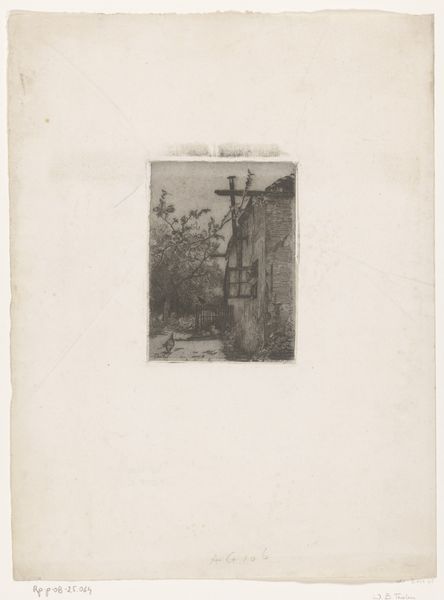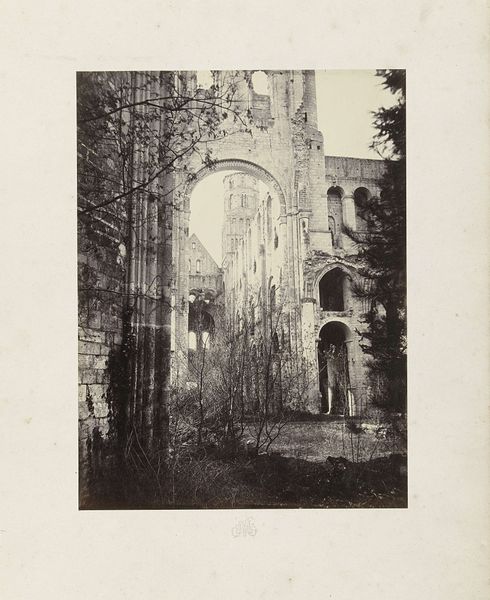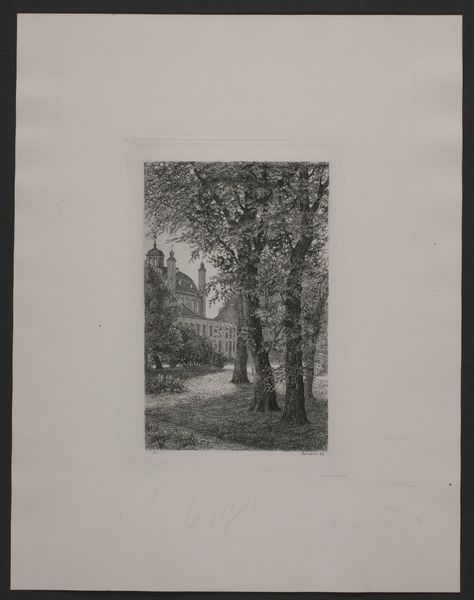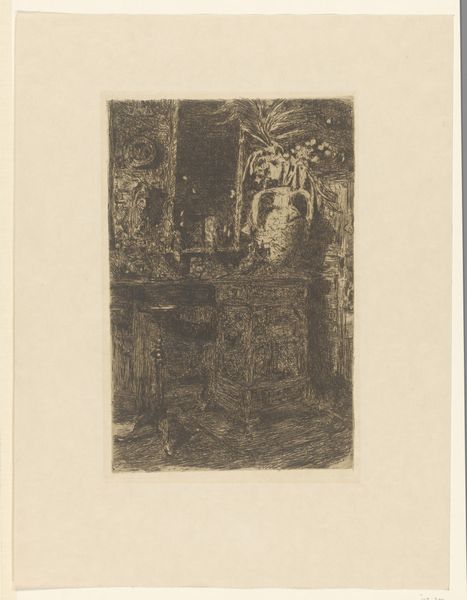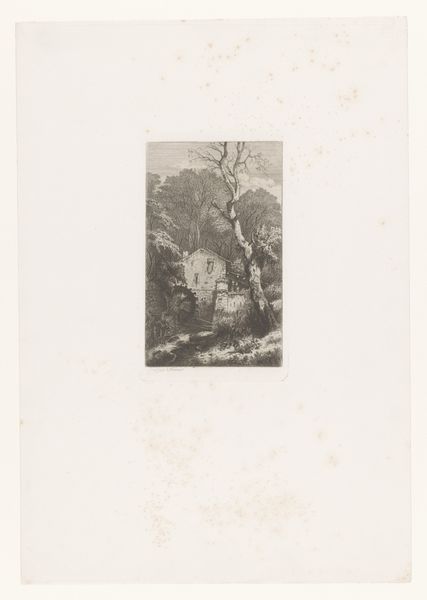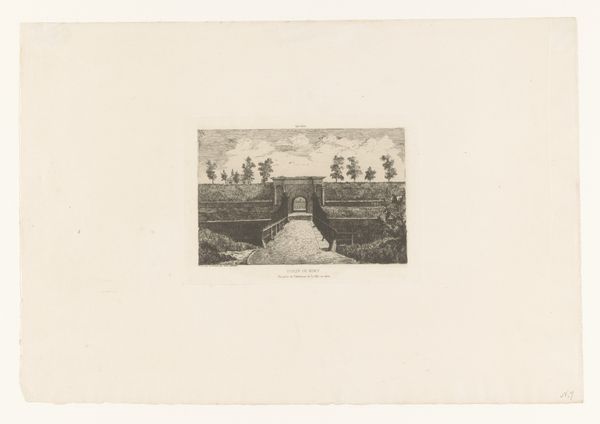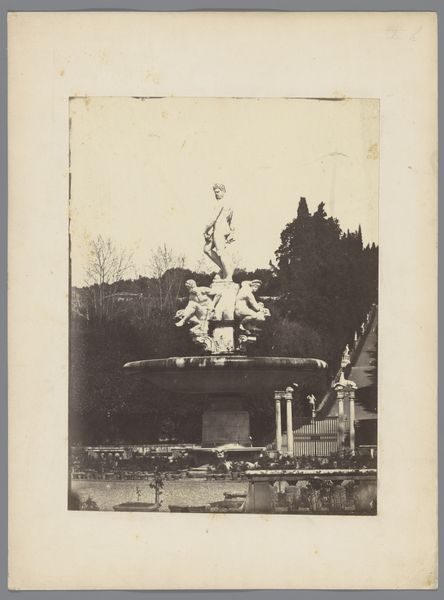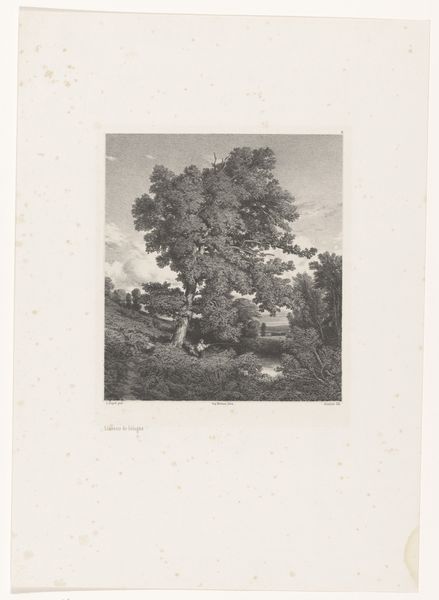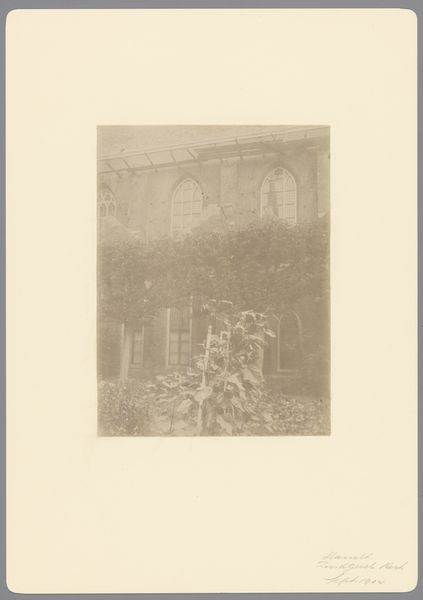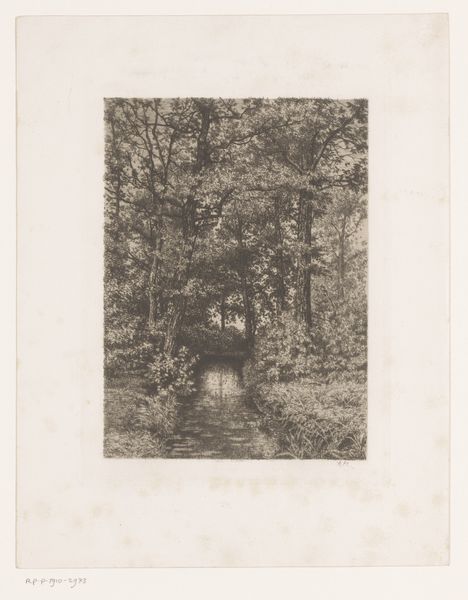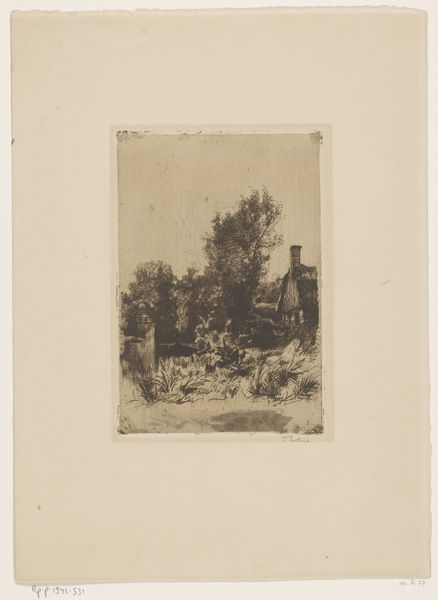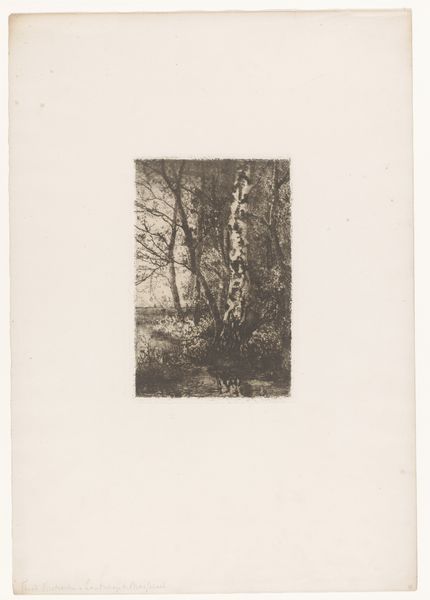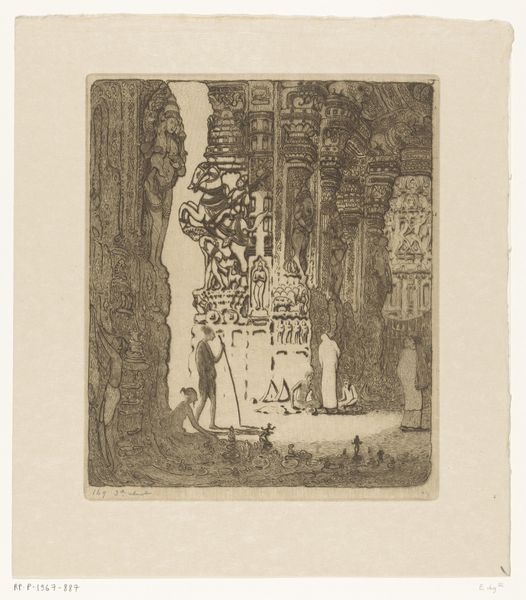
print, etching
# print
#
etching
#
landscape
#
genre-painting
#
realism
Dimensions: height 245 mm, width 218 mm
Copyright: Rijks Museum: Open Domain
Editor: This etching, "Stadsmuur te Aken," or "City Wall in Aachen," made by Louis Charles Hora Siccama in 1876, presents this fascinating view of women perched atop what appears to be a decaying wall overtaken by plant life. I'm immediately struck by the contrast between the human figures and the crumbling structure. What’s your take on this piece? Curator: The juxtaposition is compelling, isn't it? Viewing this through an activist lens, I'm drawn to the way the work seems to negotiate ideas of decay and resilience, the natural world reclaiming spaces built, presumably, for control. We should think about the socio-political function of city walls like the one here in Aachen. What did they represent? Editor: Power, defense, boundaries...exclusion? Curator: Precisely. And here we see that power structure, this wall, softened and overgrown. The women, are they contained *by* the wall or elevated *on* the wall? What statement is being made about those who are usually denied power? Is this nature's subversion, time collapsing human barriers, while life and youth – represented by the women – find a new vantage point? Consider the gendered implications too – who typically controlled the building and maintaining of walls, and who was traditionally kept out? Editor: That's fascinating! I hadn't considered how gender roles might play into the image’s message. The greenery now seems like a deliberate act of reclaiming, of softening the hard lines of power. Curator: Exactly. And how does Siccama’s choice of etching, with its detailed yet slightly faded quality, contribute to this narrative? Editor: It lends a sense of historical distance, of things passing. Curator: It’s as if the etching medium itself echoes the gradual erosion of power structures and welcomes an active female gaze that redefines what such spaces symbolize. I find I'm drawn to a renewed interest in gender and landscape studies and that the intersectional dialogues this work opens up have reframed my view of it. Editor: This conversation made me realize how much context impacts my understanding. I initially saw an interesting composition, but now I see layers of meaning related to power, gender, and the passage of time.
Comments
No comments
Be the first to comment and join the conversation on the ultimate creative platform.
